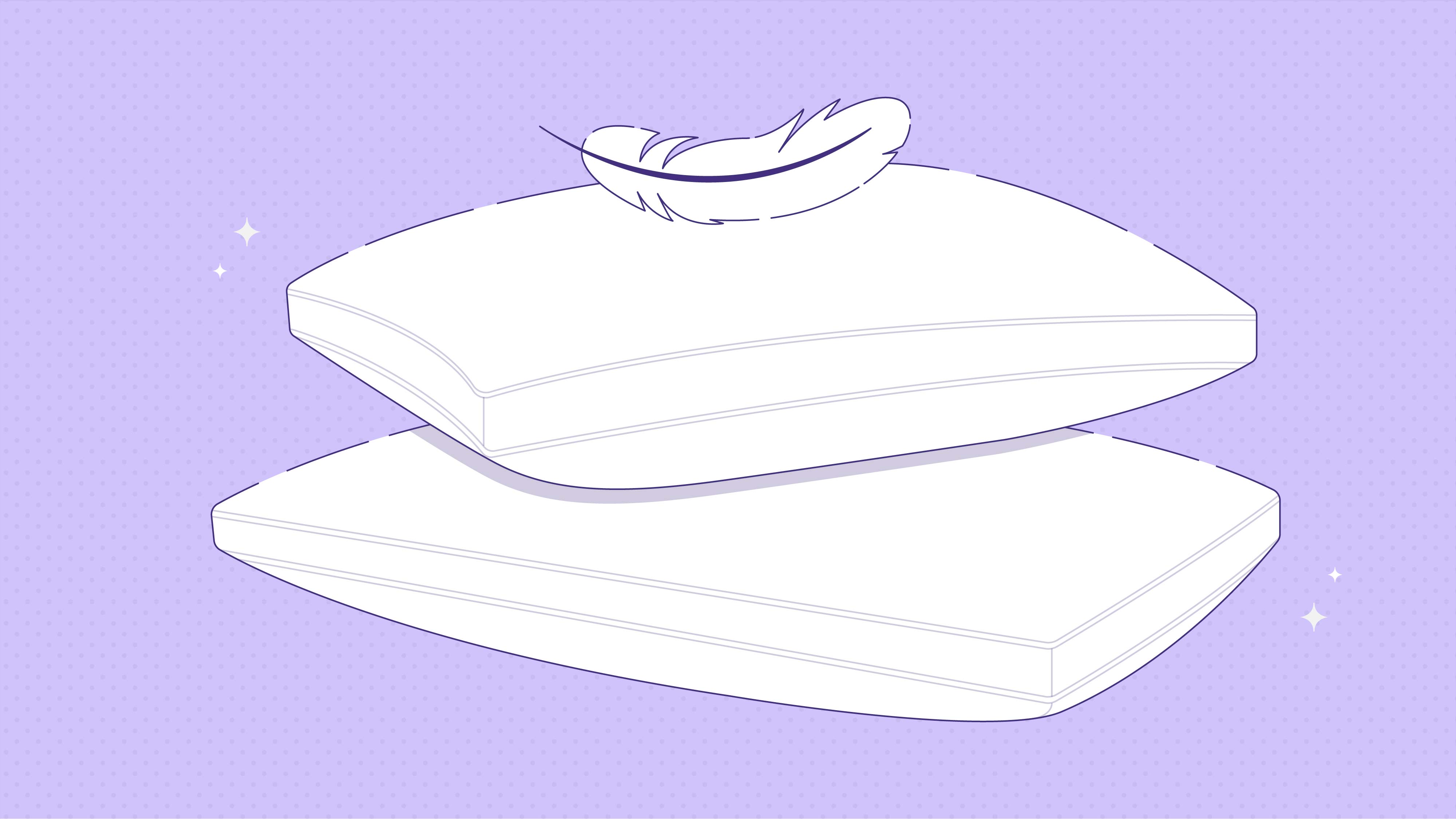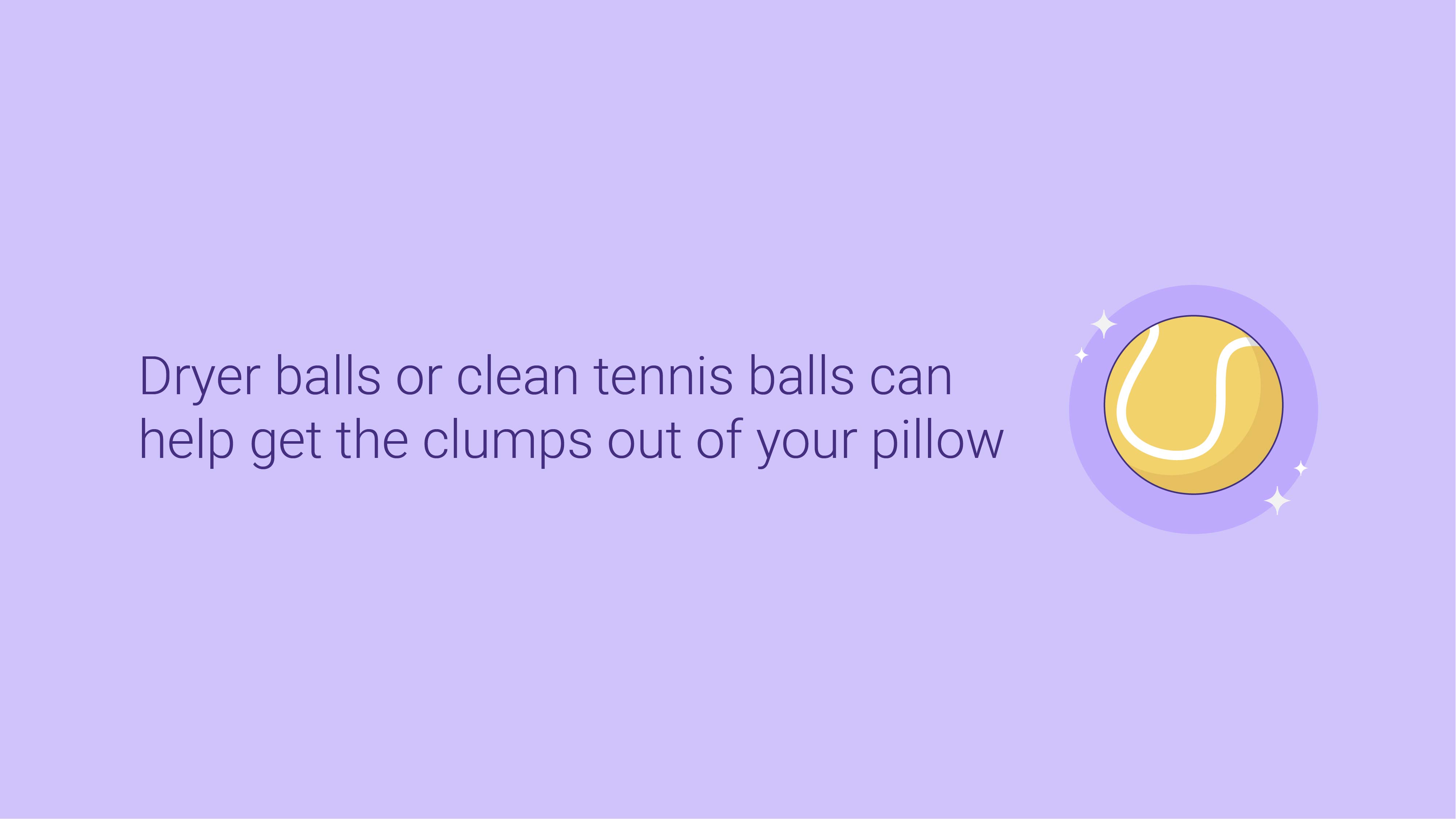
How to Clean a Feather Pillow

- Cleaning feather pillows requires specific techniques, such as using the right detergent, avoiding fabric softeners, washing with cold water, and ensuring thorough drying, all of which help maintain their fluffiness and prevent clumping.
- While some feather pillows require dry cleaning only, others can be machine washed if done carefully. Understanding the specific washing instructions and using appropriate pillow protectors can extend the time between cleanings.
- To keep pillows fresh between washings, options such as using a vinegar-water spray, adding essential oils, or applying baking soda can help neutralize odors and maintain cleanliness. Regular spot cleaning can also prevent stains and maintain pillow hygiene.
Cleaning feather bed pillows can be a complicated task. Feather pillow filling is delicate and tends to clump when wet. That means you can’t just toss these pillows in the washer with any old detergent. Instead, you’ve got to wash your feather or down pillows in a specific way to prevent them from developing lumps or going flat.
However, you can’t avoid washing your pillows at all because they’ll become full of dirt, body oil, and sweat. Below, we’ll talk about how you should wash and dry your pillow to get it sparkling clean and looking just like new.
Dry Clean
Dry cleaning is sometimes the only option for feather pillows. If your pillow says “dry clean only,” it’s best to follow the instructions. Getting a dry-clean-only pillow wet at all will likely ruin it. The best thing to do is spot clean the pillow between trips to the dry cleaner.
Also, consider a pillow protector. Pillow protectors are zippable, waterproof covers that go over your pillow and under your pillowcase. Protectors can not only defend your pillows against stains and dirt, but they can also extend the time between dry cleaner visits.
Machine Washing
Some feather pillows you can wash in a machine, but you’ll have to do it a certain way to keep your pillows from getting lumpy or going flat.
Use the Right Detergent
You need to use a laundry detergent that’s not going to clump the feathers in your pillow. Liquid detergent with lots of suds and fragrances just won’t do. It can stick to the individual feathers and take away their fluff, permanently removing the loft from your pillow. That means you need a small amount of high-efficiency, low-suds powder detergent.
You also need to avoid fabric softener, as it leaves chemical lubricant residue on your fabrics to make them feel softer. This will clump the feathers inside your pillow and leave it feeling lumpy and flat.
Correctly Load the Washer
Maintaining balance during your washer’s spin cycle is harder with a pillow than with clothes. If you’re using a standard top-load washer, you can usually take care of the balance issue by washing two pillows at once. Vertically load one pillow on each side of the agitator. If you don’t have two pillows, you can substitute a few towels.
If you’re using a washer with no agitator or a front-load washer, then you can toss a couple of towels in with the pillows to maintain balance. Make sure you’re using white towels so that you don’t transfer color to your pillow covers.
Stick to Cold Water
Using hot water when washing a pillow can damage pillow stuffing and cases. So always use cold water and the gentlest cycle your washer features.
Go for Two Rinses
You need to make sure to get all the soap out of your pillow because residual detergent can make it go flat. Set your washer for an extra rinse cycle to make sure all the soap is gone.
Drying Your Pillows
It’s vital to get your pillows all the way dry. If you don’t, they could develop mold and mildew. Bacterial growth is also a danger in moist pillows. So you’ll want to make sure your pillow is free of moisture before putting it back on your bed.

Pillow Fluffing
Fluffing your pillows during drying is extremely important if you want to get them to their full loft. Take your pillow in both hands, squeeze it, and pull it back out several times as soon as you remove it from the washing machine.
After fluffing, toss your pillow in the dryer on the low heat setting. Re-fluff every 15 to 20 minutes throughout the drying process to ensure excess water is removed and filling is evenly distributed.
Dryer Balls
Dryer balls or clean tennis balls can help get the clumps out of your pillow. Toss three wool dryer balls directly into the dryer. If you use tennis balls, tie them inside a sock first to prevent yellow dye from transferring to your pillow. You can also use a new pair of tennis shoes to fix a lumpy pillow while it’s in the dryer.
Fight Odors Naturally
To freshen your pillow between washings, you can take one of several measures. First off, you can lightly mist your pillow with a formula made of 50 percent white vinegar and 50 percent water to neutralize odors. Wait five minutes, then wipe any excess moisture off the pillow with a towel.
You can also add a few drops of essential oil to the vinegar mix to create a fresh scent. Shake well before spraying to enjoy the aroma of things like lavender, rosemary, vanilla, and more.
Or you can try following one of our top tips for deodorizing a mattress and sprinkle baking soda over your pillow. Leave the baking soda alone for at least an hour, then vacuum it all off the pillow.
FAQs
What’s the difference between down and feather pillows?
The filling in down and feather pillows come from ducks and geese. However, they’re two different types of feathers. Down clusters are the soft, fluffy layer of insulating feathers found underneath the tougher exterior feathers. Down is fuzzy, and its job is to help keep birds warm and dry even in freezing cold water or at high altitudes.
Feather pillow filling, on the other hand, is made from the tougher outer layer of feathers. This filling might contain flight feathers or protective feathers. Feather pillows are heavier and more supportive than down, while down is squishier and loftier than feathers.
One big issue with feather stuffing is the quill. Down has no quill, and feathers do. Sometimes a quill can poke through the pillowcase and stick you. This won’t ever happen with down pillows.
How often do I need to clean my pillows?
The general rule is that if you want to keep your pillows from developing problems with dirt, allergens, and moisture, you need to clean them once every six months. That means either dry cleaning or a full wash. Spot cleaning in-between washings can help maintain a pristine look.
What happens if I don’t clean my pillows often enough?
Failing to keep your pillows clean can lead to several consequences. Your pillows might develop an unpleasant odor. They could become hotbeds for bacteria, mold, and mildew. They may develop a problem with dust mites. Pillows that aren’t washed often can also collect dust, dead skin cells, sweat, oil, and other body fluids.
You don’t want to be sleeping on all that every night. It may cause you to develop allergy symptoms, even if you don’t typically suffer from allergies. Sleeping on dirty pillows can also cause skin issues like acne and staph infections.
Can I hand wash feather pillows?
It’s much easier to wash pillows in a machine than by hand. However, if you’re worried about the washing machine putting rips or tears in your pillow, you might consider soak-washing it in a tub instead of a machine. Just make sure you’re not wringing or twisting your pillow too much if you decide to hand wash it. Pressing water through the filling can lead to clumps that may be difficult or impossible to remove.
What should I do to clean my pillows between washings?
If you wind up spilling something on your pillow or otherwise staining it, you can always spot clean a pillow. There are several natural ways to remove stains from a pillow.
White vinegar and lemon juice are both so acidic they can take the color out of stains. Cover dark-colored stains with a bit of one of these acids and blot with a sponge soaked in warm water until the stain comes out. You can also make a paste out of baking soda and white vinegar to lift stains out of your pillow cover.
You can try dish soap on grease stains as well. Cover the stain in grease-fighting dish soap and blot with a wet cloth. For tough stains, you may need to leave the soap on the stain for a while before rinsing it off.
Bottom Line
Cleaning feather pillows isn’t as easy as tossing a cotton or fiberfill pillow in the washer. You need to use a suitable detergent, a gentle cycle, and the correct drying technique. However, as long as you stick to the proper methods, you should be able to keep your pillows clean, lofty, and clump-free for a long time.
